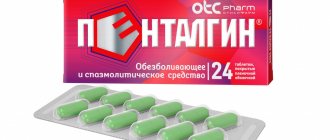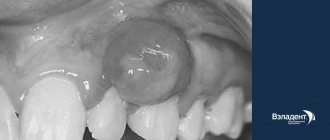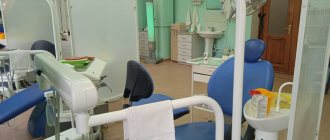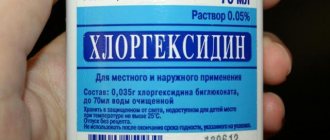Inflammatory processes in different parts of the ear lead to irritation of the nerves, swelling and severe pain. Treatment of otitis media must be started as quickly as possible, otherwise there may be serious consequences.
ALENA PARETSKAYA
Pathophysiologist, immunologist, member of the St. Petersburg Society of Pathophysiologists SVETLANA KOMAROVA Otolaryngologist, Deputy Chief Physician for CER at SM-Clinic
Acute pain in the ear is one of the most painful sensations. Many patients compare its strength with toothache and severe injuries, and women - with the process of childbirth. Most often, ear pain is due to otitis media.
What is otitis media
Otitis is the general name for inflammatory processes in the ear area.
Inflammation can be acute or chronic, affecting various parts of the ear. If the inflammation is localized in the auricle and ear canal to the border of the eardrum, this is otitis externa; inflammation in the tympanic cavity is otitis media; if the area of the cochlea is affected, the inner part of the ear is internal otitis or labyrinthitis.
These pathologies are extremely painful, accompanied by fever, hearing impairment, and discharge from the external meatus. In addition, without treatment, otitis media can lead to serious complications - hearing loss or complete deafness, paresis in the area of the facial nerve, damage to the bones or brain.
Causes of otitis media in adults
The most common causes of otitis externa are injuries, infections of the skin and underlying tissues in the ear canal area.
Chemical trauma to the ear, irritation and inflammation due to wax plugs, water getting into the ear, and the formation of boils are also possible. Otitis media is the most common form of the disease. It is usually provoked by bacterial infections, less commonly by viruses, pathogenic fungi, and mixed infections. The most common pathogens:
- Pneumococcus;
- hemophilus influenzae;
- influenza virus;
- various pathogens of ARVI.
In recent years, cases of fungal otitis media have become more frequently reported.
Risk factors that increase the likelihood of otitis media include sniffing and excess mucus in the nasopharynx. pressure difference when diving, diving to depth. Often, otitis media becomes a complication of a cold, ENT pathologies (adenoiditis, tonsillitis, pharyngitis, rhinitis). The risk is higher in people with immunodeficiencies.
Symptoms of otitis media in adults
With external otitis, the most common complaints are:
- pulsation in the ear, sharp pain radiating to the neck, eye or teeth;
- increased pain when chewing food, talking, closing the jaw;
- redness of the ear canal and auricle;
- hearing loss if there is discharge of pus into the ear canal area.
Acute otitis media begins with a rise in temperature along with shooting pain inside the ear.
It increases as mucus and pus accumulate in the cavity; after 2–3 days, the membrane ruptures, pus flows out of the ear and the condition improves. The temperature drops and the pain subsides. Then the rupture of the membrane heals without a trace. In the chronic form, mesotympanitis may occur - inflammation is localized in the area of the Eustachian tube and the lower, middle part of the tympanic cavity. A hole is formed in the membrane, but the membrane itself is stretched.
Key complaints:
- hearing loss;
- periodic appearance of pus from the ear;
- noise in the ear;
- dizziness;
- during exacerbation - pain and fever.
With the development of epitympanitis, a sharp decrease in hearing occurs, the release of foul-smelling pus, pressure in the ear, pain in the temples, and dizziness. Periods of exacerbation are followed by remissions, but hearing does not improve completely.
Efficiency. Professionalism. Mercy
Doctors quickly arrived at the scene and found out that a 10-year-old boy had developed acute laryngotracheitis: he was troubled by difficulty breathing, hoarseness and a barking cough. Inhalations before the ambulance arrived brought relief to the child. Doctors continued to provide care to the boy until he arrived at the hospital: to reduce swelling of the larynx and vocal cords, the patient was inhaled with hormones through a nebulizer. ⠀ According to emergency medical services doctor Maria Kolyasnikova, the upper respiratory tract of a child is much shorter and narrower than that of an adult, therefore, during acute respiratory viral infections, the inflammatory process of the mucous membrane of the larynx and trachea proceeds rapidly and can cause a dangerous condition. Swelling and spasm lead to the development of stenosis - partial or complete narrowing of the lumen of the larynx, preventing normal breathing. ⠀ So that parents can assess the severity of stenosis (narrowing of the airways), the symptoms of the disease are divided into four categories: ⠀
- 1st degree (compensated stenosis): consciousness is clear, a barking cough occurs periodically, hoarseness is noted;
- 2nd degree (subcompensated stenosis): the child is excited, breathing - with the participation of auxiliary muscles, retraction of the compliant areas of the chest, flaring of the wings of the nose; hoarse voice;
- 3rd degree (decompensated stenosis): the child is excited or inhibited, consciousness is confused, breathing is with the participation of auxiliary muscles, retraction of the compliant areas of the chest, flaring of the wings of the nose; the skin and mucous membranes are pale, the hands, feet, lips, tip of the nose are bluish in color;
- 4th degree (asphyxia): there is no consciousness, there may be convulsions; breathing is frequent, shallow, the skin is cyanotic (blue); a rare pulse as a terrible symptom of impending cardiac arrest.
⠀ If an attack occurs, the doctor advises parents not to panic, but to urgently call an ambulance and begin providing first aid. ⠀ What needs to be done before the doctors arrive: ⠀
- calm down everyone who is near the child; distract the child in any way: give a phone, tablet, book or turn on a favorite cartoon;⠀
- ventilate the room, humidify the air in any way possible (humidifier, wet towels, sheets, go into the bathroom, turn on warm water and breathe);⠀
- warm, plentiful drink;
- if body t is high, give the child an antipyretic;⠀
- if the nose is stuffy, apply vasoconstrictor drops;
- inhalation with a glucocorticoid (if the child is not afraid of the noise of the nebulizer) - if the drug is available in the home medicine cabinet on the recommendation of the attending physician;
⠀ What you should not do, and what medications you should definitely not use: ⠀
- antibiotics (indicated only if there is a concomitant bacterial infection, such as otitis media, but even in this case they should not be used without consulting a specialist);
- antiviral (with the exception of influenza, but even in this case it should not be used without consulting a specialist);
- antihistamines and antispasmodics;
- bronchodilators for inhalation (dilate the bronchi, do not relieve laryngeal edema);
- spray antiseptics into the throat (may increase stenosis);
- drip and inhale drugs with naphazoline (toxic);
- mucolytics (lead to increased mucus secretion and blockage of the lumen of the larynx).
In total, over the past weekend, from September 25 to 26, ambulance doctors and paramedics provided assistance to 1,086 residents of the regional capital and Tyumen region. 595 calls were received in emergency form, the rest were urgent. 545 patients were delivered to hospitals.
During this period, dispatchers sent 1,897 calls to clinics around the clock; in all cases, the patients’ condition did not pose a threat to life: increased blood pressure or temperature, lower back pain, etc.
Doctors from the operational department advised 635 people on issues of self-help and mutual assistance in situations that did not require a medical team to visit.
Author: Irina Berdyugina, press service of the State Budgetary Healthcare Institution "Emergency Medical Care Station". Photo by the author.
Diagnostics
The diagnosis can be suspected based on typical complaints, but the doctor will ask in detail where and how the ear hurts, press on the tragus, pull the earlobe down to determine whether there is pain. In addition, the otorhinolaryngologist will examine the ear using instruments and lighting to specifically examine the ear canal, eardrum, and determine whether there is pus or perforation in it. To determine sensitivity to antibiotics, flora culture is performed. The doctor may also prescribe:
- blood tests (general, biochemistry) to determine the nature of inflammation;
- X-ray of the paranasal sinuses, if a connection with sinusitis is suspected;
- X-ray of the temporal bone in chronic otitis media.
All this data is needed in order to determine treatment tactics, the need for antibiotics, surgical interventions (membrane perforation or other interventions).
Material and methods
Clinical observations and comparative studies were carried out in 60 children with acute respiratory diseases who received inhalation of miramistin solution through a nebulizer (40 children) and in the form of a spray (20 children - control group) 2 times a day for 10 days. Inhalations were carried out through a mask using a nebulizer using 3-4 ml of a standard 0.01% aqueous solution of Miramistin. Irrigation of the pharynx was carried out with a 0.01% solution of miramistin in the form of a spray.
The effectiveness of Miramistin was assessed on the basis of dynamic observation data in accordance with the results of various research methods (general blood count, rhinoscopy, pharyngoscopy, assessment of the dynamics of subjective complaints using a sensory analogue scale (SAS) on a 10-point system, examination of external respiratory function, monitoring peak expiratory flow, studying the level of physical development and physical fitness of children).
The studies were conducted in accordance with the requirements of the Declaration of Helsinki. Statistical processing of the study results was carried out using standard computer programs Statistika 7.0 and SPSS 15.0.
Modern methods of treatment
We asked otolaryngologist Svetlana Komarova to talk about how otitis in adults is treated today. According to her, drug therapy may include:
- drops in the ear containing the analgesic Phenazone and the local anesthetic Lidocaine - to relieve pain and reduce inflammation, if discharge from the ear appears, antibacterial drops containing Rifampicin or Ciprofloxacin should be used;
- vasoconstrictor drops containing Xylometazoline 0.1%, Oxymetazoline 0.05%, Naphazoline 0.1%, Phenylephrine 0.025% are instilled into the nose to reduce swelling of the nasopharyngeal mucosa around the mouth of the auditory tubes;
- if local drugs are ineffective, analgesics and non-steroidal anti-inflammatory drugs (Acetylsalicylic acid, Paracetamol, Tramadol, Ketoprofen, Ibuprofen) are prescribed orally;
- antipyretic drugs (Paracetamol) are used when the temperature rises above 38.5 C;
- antihistamines (Diphenhydramine, Clemastine, Chloropyramine) are prescribed to reduce swelling;
- broad-spectrum antibacterial drugs: penicillins, cephalosporins, macrolides, respiratory fluoroquinolones.
Non-drug treatment methods:
- procedures prescribed by an otolaryngologist: lavage of the external auditory canal, catheterization of the auditory tube, blowing of the auditory tubes according to Politzer, pneumomassage of the eardrum;
- physiotherapy: ultraviolet irradiation, UHF, microwave therapy, electrophoresis with anti-inflammatory drugs as prescribed by a physiotherapist.
Non-drug treatment methods help relieve pain, restore hearing and prevent complications.
In case of complicated otitis or the ineffectiveness of conservative therapy, surgical treatment (myringotomy, bypass of the tympanic cavity, radical surgery on the middle ear) is indicated, aimed at sanitizing the source of infection, restoring hearing, and preventing relapses.
Medicines for sore throat
Best articles of 2015
From an anatomical point of view, the throat is the entrance gate not only for food and air, but also for many different infections. Each of us at least once in our lives suffered from a sore throat during the cold season. How to treat it correctly with such an abundance of drugs?
For clarity, let’s imagine the throat – the “entrance gate” to our body – as a window in the room. When the wind blows through the window (the throat becomes inflamed), cold and street debris enter the room. The room needs cleaning, and our window needs repairs: strengthening the frame, plugging cracks, etc. If the damage is severe, more serious intervention may be required.
Getting rid of drafts
If the wind blows through the apartment due to poorly foamed seams at the double-glazed windows (viral infection), the master seals the gaps between the frame and the window opening. For us, the sealant in the frame will be antiviral drugs.
So, Rimantadine (Remantadine®), oseltamivir (Tamiflu®)
or interferons (
Grippferon®, Viferon®
) destroy viruses and block their reproduction.
Analogy: sealant prevents air from passing between the frame and the wall.
The production of your own interferon is stimulated by Cycloferon®, Tiloron (Amiksin®, Lavomax®)
or
kagocel
.
Analogy: their action can be compared to a sealant that expands in volume and covers the smallest cracks.
If the problem is due to dry wood frames (bacterial infection), sealant will not help. It is necessary to use classical methods: usually penicillins or macrolides.
Penicillin antibiotics: phenoxymethylpenicillin (Ospen®), amoxicillin (Flemoxin Solutab®), amoxicillin with clavulanic acid (Amoxiclav®, Augmentin®)
They work like cotton wool: they plug up cracks and keep the cold out of the house.
Macrolides have a targeted effect and specifically destroy streptococci (they cause rheumatism as a complication of sore throat).
Analogy: for better tightness, foam tape is used, which fits tightly to the sashes and window frame.
Azithromycin (Sumamed®), midecamycin (Macropen®), clarithromycin (Kladits®, Klabax®)
destroy pathogens of sore throat.
Taking these drugs, like their parent erythromycin
, requires strict adherence to the instructions: they should be taken on an empty stomach, that is, half an hour before meals or two hours after meals. Self-adhesive tape does not stick to an uncleaned frame!
We compensate for “production costs”
Treatment of the throat should not cause digestive disorders. Just as over-sealing window frames leads to glass fogging, taking antibiotics can upset the balance of microflora.
In order not to wipe the window sills every time, you need something that will effectively absorb moisture. In our case, antifungal agents are suitable: nystatin, fluconazole
. The drugs have different prices and duration of work, but the mechanisms of action are almost the same.
We eliminate the consequences and recover
What do we do to protect ourselves during window repair? We dress warmly and eliminate the draft. When treating a throat, allergy medications or antihistamines are used for this purpose, for example, the substance loratadine
(Claritin®, Lomilan®)
or
mebhydrolin (Diazolin®)
- they do not cause drowsiness and do not inhibit the central nervous system.
Children under three years of age can be given cetirizine (Zyrtec®, Cetrin®, Zodak®)
,
desloratadine (Erius®)
;
over two years - levocetirizine (Xyzal®)
.
Medicines that will relieve inflammation and relieve headaches: ibuprofen (Nurofen®), paracetamol (Panadol®, Calpol®)
.
To regain your voice, it is necessary to relieve swelling of the vocal cords. By analogy with window frames, we need to lubricate the hinges. Irrigation of the pharynx with a 3% solution of ascorbic acid
will help great.
Repair without a technician - self-help
While waiting for a meeting with a specialist - in emergency situations when it is impossible to promptly call a doctor - we use available means: medications sold in pharmacies without a prescription.
We destroy the pathogen at the point of its penetration
In many cases, a window that is not tightly closed is caused by trivial things: dust, sand, and dirt have accumulated in the sashes. Therefore, first we gargle with decoctions of sage, chamomile, oak bark
.
If a well-known solution helped previously, for example furatsilin
or
rivanol
, we use it. Mechanical flushing of bacteria is effective at any stage of sore throat. If it is not possible to deal with mud deposits with water, we use special “solvents”.
Local medications
These drugs destroy bacteria exactly where they enter the body. (In case of a draft, we close the window tightly after we clear the joints between the doors and frames.)
Aerosols ( Stopangin®
etc.) contain a mixture of antibiotics (levomenthol and hexethidine) based on essential oils: the oils are absorbed into the mucous membrane, “pulling” the antibiotics with them.
Another effective antimicrobial drug Novosept forte®
.
Contains a powerful analgesic substance tetracaine (4 times stronger than the usual novocaine!) and zinc ions
- an anti-inflammatory component.
Important: you can use aerosols from a conscious age, since after irrigating your throat you must not eat, drink, or swallow anything for five minutes.
Lollipops, lozenges, and dissolving tablets act similarly to sprays.
, for example,
Septolete® or Strepsils®
. Their reception is designed for a longer period of time. By analogy with washing window frames, after using such products a thin film is formed that repels dust.
****
Treatment of the throat should be comprehensive and selected depending on the causative agent of the disease. Personally taken measures are good at the very beginning. If, despite active treatment, the sore throat does not go away, you should consult a doctor. No matter how much you repair the window frame, if the glass is cracked (in medical terms, an abscess has formed - a purulent inflammation of tissue), you cannot do without the intervention of a specialist.
There is no point in sealing the crack with tape, and it is dangerous - the glass can fall out, break, cause injury, and even cause death. In the same way, the resulting abscess is extremely dangerous. Therefore, the window should only be replaced by a master, and the abscess should be removed by a surgeon. Regardless of location, all patients with a throat abscess are subject to emergency hospitalization.
Sergey Buyanov
Photo thinkstockphotos.com
Products by topic: [product](rimantadine), [product](oseltamivir), [product](interferon), [product](tilorone), [product](kagocel), [product](phenoxymethylpenicillin), [product]( amoxicillin), [product](azithromycin), [product](midecamycin), [product](clarithromycin), [product](erythromycin), [product](loratadine), [product](mebhydroline), [product](cetirizine ), [product](desloratadine), [product](levocetirizine), [product](ibuprofen), [product](paracetamol), [product](sage), [product](chamomile), [product](oak bark ), [product](furacilin), [product](rivanol), [product](ascorbic acid), [product](levomenthol), [product](hexethidine), [product](tetracaine), [product](Septolete ®), [product](Strepsils®)
What antibiotics are effective for otitis media?
“Systemic antibacterial therapy is indicated in all cases of moderate and severe acute otitis media,” says otolaryngologist Svetlana Kovaleva, “as well as in patients with immunodeficiency conditions.
If otitis is mild (no pronounced symptoms of intoxication, pain, hyperthermia up to 38 ° C), you can refrain from prescribing antibiotics. However, if there is no positive dynamics within 48 hours, antibiotic therapy should be resorted to. For otitis, broad-spectrum antibiotics are prescribed that are effective against typical pathogens: Streptococcus pneumoniae, Haemophilus influenzae, Moraxella catarrhalis, Streptococcus pyogenes, Staphylococcus aureus.
The drug of choice is Amoxicillin.
Alternative drugs for allergies to β-lactams are modern macrolides (Josamycin, Azithromycin, Clarithromycin). In case of ineffectiveness, as well as in patients who have received antibiotics for a month, for patients over 60 years of age, it is advisable to prescribe a complex - amoxicillin + clavulanic acid. Alternative drugs are II-III generation cephalosporins (Cefuroxime axetil, Ceftibuten) or fluoroquinolones (Levofloxacin, Moxifloxacin).
For mild to moderate cases, oral antibiotics are indicated. In severe and complicated cases of otitis, begin with intravenous or intramuscular administration of the drug, and then continue treatment orally.
The duration of antibacterial therapy is 7–10 days. For complicated otitis – 14 days or more.
You should not use antibiotics on your own; you should consult an otolaryngologist. Otitis media can be caused by fungal flora or herpes infection. The use of antibiotics in this case can worsen the course of the disease.
GBOU "NIKIO im. L.I. Sverzhevsky" of the Moscow Department of Health
Developer institution: State Healthcare Institution “Moscow Scientific and Practical Center of Otorhinolaryngology” of the Moscow Department of Health.
Compiled by: Director of the State Institution "MNPTSO" of the Moscow Department of Health, Professor A.I. Kryukov, Head of the Department of Laryngeal Microsurgery and Phoniatrics, Moscow Scientific and Practical Center of Otorhinolaryngology, Moscow Healthcare Department, Ph.D. S.G. Romanenko, senior researcher at the department of microsurgery of the larynx and phoniatrics of the State Healthcare Institution "MNPTSO" of the Moscow Healthcare Department, candidate of medical sciences. O.G. Pavlikhin, Department of Laryngeal Microsurgery and Phoniatrics of the State Healthcare Institution "MNPTSO" of the Moscow Healthcare Department Eliseev O.V.
Reviewer: Doctor of Medical Sciences, Professor V.P. Gamow
Doctor of Medical Sciences, Professor V.F. Antoniv
Purpose: The guidelines present schemes for inhalation therapy for patients with inflammatory diseases of the larynx. The methodological recommendations are intended for outpatient and inpatient otorhinolaryngologists and phoniatricians.
This document is the property of the Moscow Government Department of Health and may not be reproduced or distributed without appropriate permission.
INTRODUCTION
Inhalation therapy has been used since ancient times. Hippocrates is considered the founder of inhalation therapy. At the same time, the simplest inhalation drugs appeared. The ancestors of modern inhalation devices appeared in the 19th century and gradually improved along with the development of technological progress. In 1932, the Norwegian chemist E. Rotheim received a patent for the first aerosol apparatus. Subsequently, until now, inhalation equipment has been improved, and the range of drugs used for inhalation therapy continues to expand.
The main advantage of aerosol therapy is the ability to achieve a quick and effective therapeutic effect using a relatively small dose of the drug and a significant reduction in the negative systemic effect. During inhalation, rapid and intense absorption of drugs occurs, with an increase in the active surface and its deposition in the submucosal layer. A high concentration of the drug is created directly at the site of inflammation.
Endolaryngeal infusions are significantly less effective than aerosol therapy, because administered drugs penetrate shallowly into the tissues of the larynx due to short contact of the drug with the mucous membrane of the larynx. The use of endolaryngeal infusions is often limited by the anatomical and individual characteristics of the patient. In addition, infusions into the larynx cannot be performed several times a day. All of the above does not mean that endolaryngeal infusions should be abandoned altogether. This type of local therapy is indispensable in phoniatric and ENT practice in cases where a rapid therapeutic effect is required without deep penetration of the medicinal substance. For example, in the case of hemorrhage into the vocal fold caused by forced phonation, or acute catarrhal laryngitis, accompanied by impaired microcirculation of the vocal fold against the background of a hard attack, infusions of vasoconstrictors into the larynx (adrenaline 0.1% - 0.3 in 2 ml of physiological solution). Medicines are poured into the larynx, warmed to body temperature, drop by drop until a clinical effect is achieved: blanching of the mucous membrane, constriction of the vessels of the vocal fold. In this case, a rapid therapeutic effect is achieved and there are no side effects such as dryness of the laryngeal mucosa.
Inhalers, based on the methods of obtaining an aerosol medium, are ultrasonic, compressor, pneumatic, steam and heat-moist. When choosing a particular type of inhalation therapy, one should take into account not only the form of a particular drug, but also all parameters of the procedure (form of the drug, aerosol concentration, aerosol temperature, etc.).
Research has proven that the temperature of inhaled aerosols seriously affects the ciliated epithelium and the condition of the medicinal substance itself. High and low temperatures of inhaled solutions negatively affect the course of the inflammatory process. When the temperature of the inhaled drug is above 39-40 degrees Celsius, the function of the ciliated epithelium is suppressed (above 41 degrees it dies). Solutions with temperatures below 25 - 28 degrees are a cold irritant. The optimal aerosol temperature is considered to be 36-38 degrees. Heat-moist and steam inhalations against the background of acute laryngitis can cause the development of edema of the laryngeal mucosa with stenosis of its lumen. It should also be noted that many drugs sharply reduce or even lose their biological activity when heated to high temperatures. In this regard, we consider the use of heat-moist and steam inhalations for the treatment of inflammatory pathology of the larynx to be inappropriate. This type of therapy can be used with caution in subatrophic and atrophic processes in the larynx.
In recent years, the arsenal of pocket inhalers has expanded. There are pocket liquid inhalers and powder inhalers. Pocket inhalers are used to administer a dosed amount of the drug into the respiratory tract. Despite the convenience of their use, the scope of use of this type of inhaler for laryngeal pathology is limited. The bulk of the aerosol settles in the oral cavity. The disadvantages of aerosol packaging include the low temperature of the resulting aerosol. Also, one of the disadvantages of aerosol cans is that as it is used, the pressure inside it decreases and the drug is not completely ejected.
Inhalation equipment.
Inhalation equipment is divided into stationary units and portable portable devices. Due to the fact that the treatment of inflammatory diseases of the larynx requires multiple inhalations throughout the day, more and more attention is being paid to portable inhalation devices.
In medical practice, nebulizers are more often used (from the Latin nebula - fog, cloud). There are two main types of nebulizers: compressor and ultrasonic. Compressor inhalers are either jet or pneumatic. A compressor inhaler is a device for converting a medicinal substance into a fine aerosol under the action of compressed air from a compressor or under the influence of compressed oxygen. In ultrasonic inhalers, atomization is carried out as a result of high-frequency vibration of piezoelectric crystals.
The results of our clinical experimental study prove that inhalation procedures performed on individual ultrasonic inhalation devices are more effective compared to inhalations performed on compressor devices. This is explained by the fact that the aerosol of ultrasonic inhalation devices is an electric aerosol. Such an aerosol, in addition to the medicinal properties of the medicinal substance itself, consists almost entirely of negatively charged particles that have an additional anti-inflammatory effect. During inhalation procedures carried out on compressor inhalation devices, in addition to negatively charged particles, positively charged particles and particles without a charge are also formed. The disadvantage of using an ultrasonic inhaler is the high consumption of the drug, since the loss of the drug also occurs in the exhalation phase.
According to the degree of dispersion, aerosols are distinguished as highly dispersed (particle size 0.05-0.1 µm), medium dispersed (particle size 0.1-1 µm) and coarsely dispersed (particle size more than 1 µm). Particles with a diameter of 8 - 10 microns usually settle in the oral cavity, 5 - 8 microns in the pharynx and larynx, 3 - 5 microns - in the trachea and bronchi, 1 - 3 microns in the bronchioles, 0.5 - 2 microns - in the alveoli. For the treatment of diseases of the upper respiratory tract, aerosols of medium and low dispersion are mainly used.
Inhalation therapy for the treatment of laryngeal diseases can be used either as monotherapy or in combination with other treatment methods. The use of inhalation therapy is indicated for patients with inflammatory pathology of the larynx, edematous laryngitis of various etiologies, vocal fold nodules, as symptomatic therapy to achieve a mucolytic effect, moisturizing the laryngeal mucosa.
Contraindications to inhalation therapy
- Tendency to spasms of the coronary arteries
- Condition after myocardial infarction and cerebral hemorrhage
- Bleeding of various etiologies and susceptibility to them
- Severe atherosclerosis of the vessels of the brain and heart
- Spontaneous pneumothorax
- Common bullous form of emphysema
- Malignant neoplasms.
Rules for inhalation
- Inhalations are carried out no earlier than 1-1.5 hours after eating or physical activity.
- Before the procedure, the patient should not take expectorants or gargle with antiseptic solutions. It is recommended to rinse your mouth with boiled water at room temperature.
- Smoking is prohibited before and after inhalations.
- Inhalations should be taken sitting in a comfortable position, straight, in such a way as to ensure calm breathing. It should be taken into account that a strong forward tilt of the body during the procedure makes breathing difficult.
- For diseases of the nose, paranasal sinuses and nasopharynx, inhalation and exhalation must be done through the nose. In case of pathology of the larynx, inhalation should be done through the mouth. After taking a deep breath through your mouth, it is recommended to hold your breath for 2 seconds and then exhale completely through your nose.
- Breathing during inhalation should be normal, not forced. Frequent deep breathing causes hyperventilation and may cause dizziness. If dizziness occurs, it is necessary to interrupt inhalation for 1-2 minutes.
Aerosol therapy - basic principles.
Aerosols of drugs have mucolytic, anti-inflammatory, anti-edematous, antibacterial effects, and are able to maintain mucociliary clearance and regulate the degree of hydration.
Antibacterial and antifungal agents, enzymes, hormonal drugs, mucolytics, mineral waters, herbal medicines, biostimulants, and biologically active substances are administered in aerosol form.
The use of inhalation therapy makes it possible to reduce the intake of antibacterial and other drugs, significantly increase the effectiveness of treatment, and reduce the manifestation of systemic and side effects of other drugs.
One of the necessary conditions for normal phonatory activity of the vocal folds is sufficient moisture in the mucous membrane of the vocal folds. Dryness of the laryngeal mucosa can be caused not only by an inflammatory process, but also by side effects of the use of medications such as topical corticosteroids for bronchial asthma, desensitizing drugs, etc. This is especially important for patients with vocal professions. The use of inhalation therapy with mineral water or saline in these cases will help neutralize the side effects of these drugs, improve voice quality and accelerate epithelization processes after endolaryngeal interventions.
Recently, the attitude towards the use of oil inhalations has changed. The purpose of oil inhalation is to cover the mucous membrane with a thin protective and softening layer. The duration of oil inhalations is on average 5-8 minutes. In 5 minutes, 0.25 g of oil is converted into an aerosol. According to numerous studies conducted in recent years, it has been established that inhaled oil entering the alveoli contributes to the development of alveolitis and the destruction of surfactant. Therefore, this method of treatment, which was widely used in the past, is currently recommended not to be used.
When carrying out inhalation therapy, it is necessary to adhere to a certain sequence of use of medicinal substances. The presence of a large amount of sputum and crusts on the surface of the mucous membrane prevents the absorption of inhaled substances. In these cases, treatment should begin with inhalation of mucolytic drugs and only after that, after 20-30 minutes, aerosols of other drugs should be prescribed. If severe dryness of the mucous membrane of the oropharynx and larynx appears after the use of inhaled corticosteroids, inhalation with saline or mineral water is indicated to moisturize the mucous membrane.
When planning inhalation therapy, one should adhere to the principle of sequential use throughout the day of medications with different pharmacological activities and directions and selection of individual treatment regimens depending on the nature, severity and stage of inflammation.
Medicines for nebulizer aerosol therapy.
Antibacterial drugs.
The high effectiveness of antibacterial and antifungal drugs when applied topically in the treatment of inflammatory pathology of the larynx has long been known. However, before starting inhalation, you should especially carefully collect an allergy history. There are known cases of anaphylactic shock during an inhalation procedure with antibacterial agents. Previously, inhalations with streptomycin, penicillin, tetracycline, chloramphenicol and oleandomycin were often prescribed. Currently, inhalations of 2 ml of a 0.01% solution of miramistin or 2 ml of a 1% solution of dioxidine mixed with 3 ml of saline are most often used in practice. The antibiotic Fluimicil, which also has a mucolytic effect, has shown high therapeutic effectiveness. For inhalation, use ½ bottle of the drug for inhalation, 2 times a day. It is possible to use other antibacterial agents, which are prescribed in accordance with the result of a microbiological study. The average duration of therapy is 5 days.
Antifungal drugs
For the treatment of laryngeal mycoses, in addition to general antifungal and anti-inflammatory therapy, inhalations of 3000 units/ml of nystatin are used. The solution is prepared before use: 75 mg of nystatin sodium salt powder in 5 ml of distilled water once a day. The sodium salt of levorin is also used, 200,000 units per inhalation. The course of treatment usually lasts 12-15 days. Just as with any other pathology of the larynx, inhalations with antifungal drugs, if necessary, alternate with inhalations with proteolytic enzymes, saline or mineral water.
Corticosteroids.
Inhaled corticosteroids have anti-edematous and anti-inflammatory effects. Inhalation of corticosteroids is used for all inflammatory diseases of the larynx, especially those accompanied by swelling of the mucous membrane. Mixtures of hydrocortisone hemisuccinate 25 mg or prednisolone 15 mg or dexamethasone 2 mg in 3 ml of saline are used. Inhalations are prescribed 2 times a day. In case of severe swelling of the laryngeal mucosa - up to 4 times a day. The duration of treatment depends on the dynamics of inflammatory changes. For chronic inflammatory processes, the course of treatment averages 10 days. A side effect of these drugs is dryness of the laryngeal mucosa. In patients with inflammatory diseases of the larynx, especially after surgery, this may slow down the epithelization process. In this regard, after inhalation of a corticosteroid, it is possible to inhale saline solution or mineral water after 10-15 minutes.
Proteolytic enzymes.
Aerosols of proteolytic enzymes have a mucolytic effect and improve mucociliary clearance. Enzyme preparations have a local anti-inflammatory and anti-edematous effect. The use of proteolytic enzymes in the form of inhalations is especially indicated for the treatment of laryngitis, accompanied by the formation of dense fibrin films or crusts, with subglottic laryngitis against the background of systemic diseases, with atrophic laryngitis.
The drugs are diluted in physiological solution or distilled water: Chymotrypsin – 3 mg in 1 ml, Trypsin 3 mg in 1 ml, Chymopsin 5 mg in 1 ml. Lysozyme is used in the form of a 0.5% solution; 3-5 ml of solution are consumed per 1 inhalation. Inhalations are prescribed 1-3 times a day for 7 days. Enzyme preparations can cause allergic reactions, and therefore they should be used with great caution.
Mucolytics and mucoregulators.
Mucolytics and mucoregulators are used for inflammatory diseases of the larynx to liquefy secretions and facilitate mucociliary clearance. Acetylcysteine is used in the form of a 20% solution, 2-4 ml 3-4 times a day. In therapeutic dosage it has a good mucolytic effect. In high dosages, it suppresses the activity of ciliated cells of the bronchial mucosa and mucociliary clearance. An undesirable effect of acetylcysteine is a reflex cough due to local irritation of the respiratory tract. Increases the tendency to bronchospasm, so it is recommended not to use it in patients with concomitant pulmonary pathology. Fluimicil antibiotic is a drug with antibacterial and mucolytic effect. Dosage used: ½ bottle for 1 inhalation 2 times a day. Lazolvan is a metabolite of bromhexine, which has a bronchosecretolytic and expectorant effect. Improves the rheological properties of sputum, reduces its viscosity and adhesive properties, and normalizes mucociliary clearance. Lazolvan is used in a dosage of 4 ml 2-3 times a day, then 2 ml 3-4 times a day in pure form or diluted with saline 1:1. The course of treatment is 7 days.
To enhance the mucolytic effect and moisturize the laryngeal mucosa, the clinic successfully uses sodium chloride 0.9% isotonic solution 2-3 ml per inhalation, sodium bicarbonate 2% solution 2-3 ml per inhalation. Inhalation of saline solution can be used for a long time as a symptomatic remedy for dry laryngeal mucosa.
The main components of mineral water are sodium, calcium, magnesium, chlorine, iron, and radon. Potassium iodide increases the amount of mucus and thins it. Magnesium carbonate increases mucus secretion, sodium carbonate reduces mucus secretion and thins it. Salt-alkaline waters reduce the feeling of dryness and cough irritation. Mineral waters containing hydrogen sulfide cause vasodilation and a short-term increase in temperature, while the function of the ciliated epithelium is activated. Mineral waters with a salt concentration of up to 150 mg/l are used. According to our data, medium-mineralized waters have the best therapeutic effect: Essentuki No. 17, Slavyanskaya.
For many years, herbal preparations that have anti-inflammatory, bactericidal, and mucolytic effects have been successfully used in the treatment of inflammatory diseases of the larynx. Only mixtures of drugs approved in the Russian Federation are allowed for inhalation
- Pharmaceutical mixture: Eucalyptus (leaf) 15.0, Salvia officinalis (leaves) 20.0, Chamomile (flowers) 10.0, Peppermint (herb) 10.0, Scots pine (buds) 15.0, Elecampane tall (roots) 20.0, Common thyme (herb) 10.0,
- Pharmaceutical mixture: Menthol 0.71g, Eucalyptus tincture 35.7, glycerin 35.7, Ethyl alcohol 100 ml.
It is possible to use chamomile infusion, a mixture of aloe extract 5 ml, Kalanchoe juice, plantain, rose hip extract, 10% solution of white natural honey. To reduce swelling of the mucous membrane and secretion of mucus, inhalations with astringents are prescribed, a decoction of oak bark, sage, infusion of St. John's wort or immortelle flowers. A good therapeutic effect was noted when using humisol 2.0 and pelloidin. Clinical data indicate the moisturizing and reparative effect of these drugs by improving microcirculation. When using multicomponent herbal preparations and honey, an allergy history should be collected with special care.
We have developed treatment regimens for inflammatory diseases of the larynx using inhalation therapy. Inhalation therapy is used in complex treatment, including antibacterial, anti-inflammatory, desensitizing agents, physiotherapy, enzyme therapy, and microsurgical interventions. As monotherapy, inhalation treatment is indicated for mild forms of inflammatory diseases of the larynx.
Scheme of inhalation therapy for acute catarrhal laryngitis, exacerbation of chronic catarrhal laryngitis:
- Mixture: Miramistin 0.01% - 2.0 + Saline solution 2.0 ml + Dexamethasone solution 2 mg. Inhale 2 times a day for 10 minutes.
- Saline solution 5.0 or Mineral water 5.0 20 minutes after inhalation of Miramistin and Dexamethasone. In case of increased dryness of the mucous membrane of the larynx, as well as for people in vocal professions, it is possible to use inhalations of mineral water or saline solution as a moisturizer up to 6 times a day. Inhalation duration is 5-10 minutes.
The course of treatment is 7-10 days.
Scheme of inhalation therapy for acute edematous laryngitis, exacerbation of chronic edematous-polyposis laryngitis:
- Dexamethasone 2 mg in 3 ml of saline 2 times a day for 10 minutes. With severe swelling of the laryngeal mucosa, inhalations can be used up to 4 times a day.
- Saline solution 5.0 ml or mineral water 5.0 ml after inhalation of a corticosteroid after 10 - 15 minutes, as well as during the day if the laryngeal mucosa is dry. Inhalation duration is 5-10 minutes.
The course of treatment for acute inflammation is 3-7 days, for chronic inflammation – 7-10 days.
Scheme of inhalation therapy for infiltrative phlegmonous, abscessing laryngitis, exacerbation of chronic hyperplastic laryngitis:
- When crusts and dense fibrinous plaque form, therapy begins with inhalation of a mucolytic or proteolytic enzyme. Use 2-4 ml of 20% Acetylcysteine solution 3-4 times a day or 4 ml of Lazolvan diluted 1:1 with saline solution. Use 3 mg of Chymotrypsin or trypsin 3 mg, chymopsin 5 mg in 1 ml of saline, or 0.5% lysozyme solution, 5 ml 2 times a day, then 2 ml 3-4 times a day in pure form or diluted with saline 1: 1.
- After 10 minutes - Fluimicil antibiotic ½ bottle 2 times a day. If the fungal nature of the disease is identified, inhalation therapy with antifungal drugs is carried out. Inhalation duration is 10 minutes.
- After 15-20 minutes - Dexamethasone 2 mg in 3 ml of saline 2 times a day. Inhalation duration is 10 minutes.
- 5.0 ml of saline or 5.0 ml of mineral water 4 - 6 times a day: 10 - 15 minutes after inhalation of the corticosteroid and an additional 2-4 times during the day, depending on the amount of viscous sputum or crusts on the mucous membrane of the vocal folds . Inhalation duration is 10 minutes.
The course of treatment is 7-10 days. In case of chronic hyperplastic laryngitis, inhalations with mineral water or saline 2-4 times a day are prescribed for up to 2-3 weeks in order to moisturize the laryngeal mucosa and reduce the viscosity of the secretion.
Scheme of inhalation therapy for chronic subatrophic and atrophic laryngitis:
- 3 mg of Chymotrypsin or trypsin 3 mg, chymopsin 5 mg in 1 ml of saline, or 0.5% lysozyme solution 5 ml 2 times a day then 2 ml 3-4 times a day in pure form or diluted with saline 1:1 . Inhalation duration is 10 minutes.
- 5.0 ml of saline solution or 5.0 ml of mineral water 4 - 6 times a day for 10 days or for a long time 2 times a day. Inhalation duration is 10 minutes.
- Inhalation with 2.0 ml of pelloidin or humisol 2 times a day. It is possible to use honey inhalations. Inhalation duration is 10 minutes. 10 procedures are prescribed for a course of treatment.
- Inhalation with a ready-made pharmaceutical mixture of medicinal herbs 2 times a day after the end of the previous course of therapy for 10 days (with very significant crust formation). Inhalation duration is 10 minutes.
Long-term, regular use of inhalations with mineral water or saline 2-4 times a day is recommended in order to moisturize the laryngeal mucosa and reduce the viscosity of the secretion until remission of the disease.
Scheme of inhalation therapy for acute laryngitis after endolaryngeal intervention:
- In the first days after surgery, inhalations of antibacterial drugs are used: 2 ml of 0.01% miramistin solution or 2 ml of 1% dioxidine solution mixed with 3 ml of saline. Fluimicil antibiotic ½ bottle of the drug for inhalation, 2 times a day.
- Inhalation of dexamethasone 2 mg in 3 ml of saline 2 times a day for 5-7 days.
- With increased formation of fibrin films, inhalation of 3 mg of Chymotrypsin or trypsin 3 mg, chymopsin 5 mg in 1 ml of physiological solution, or 0.5% lysozyme solution, 5 ml 2 times a day, then 2 ml 3-4 times a day in pure water, is added to the treatment. form or diluted with saline solution 1:1. Inhalation duration is 10 minutes.
- 5.0 ml of saline solution or 5.0 ml of mineral water 4 - 6 times a day for 10 days or for a long time 2 times a day. Inhalation duration is 10 minutes.
- If the mucous membrane of the larynx remains dry and epithelialization processes slow down, inhalations with pelloidin or humisol 2.0 are prescribed 2 times a day. 10 procedures are prescribed for a course of treatment.
The course of treatment is 7-10 days. If the inflammatory process is prolonged, inhalations with saline or mineral water are prescribed 2-4 times a day for a long period.
Treatment of inflammatory diseases of the larynx should be comprehensive. When planning therapy, the individual characteristics of the patient should be taken into account: age, duration of the disease, nature of the voice load, characteristics of professional activity, the presence of concomitant pathology. Only treatment tactics based on the principles of an individual approach, stages, and combined treatment methods can rehabilitate a patient with laryngeal pathology.
Prevention of otitis in adults at home
To prevent otitis, it is necessary to avoid hypothermia, wash your hands after going outside, irrigate the nasal mucosa with sea water after visiting places with large crowds of people, exercise, exercise, and eat fresh fruits, vegetables, and dairy products every day.
If it so happens that you get sick and a runny nose begins to bother you, then you need to blow your nose extremely carefully, while freeing only one nostril, otherwise nasal discharge can get through the auditory tube into the ear and provoke otitis media.
Proper ear hygiene is essential. It is not recommended to use cotton swabs - they can introduce a bacterial or fungal infection into the ear. For ear hygiene, use drops consisting of a combination of surfactants (Allantoin, Benzetoin chloride) that clean, moisturize and protect the skin of the external auditory canal.









